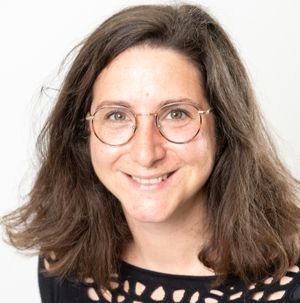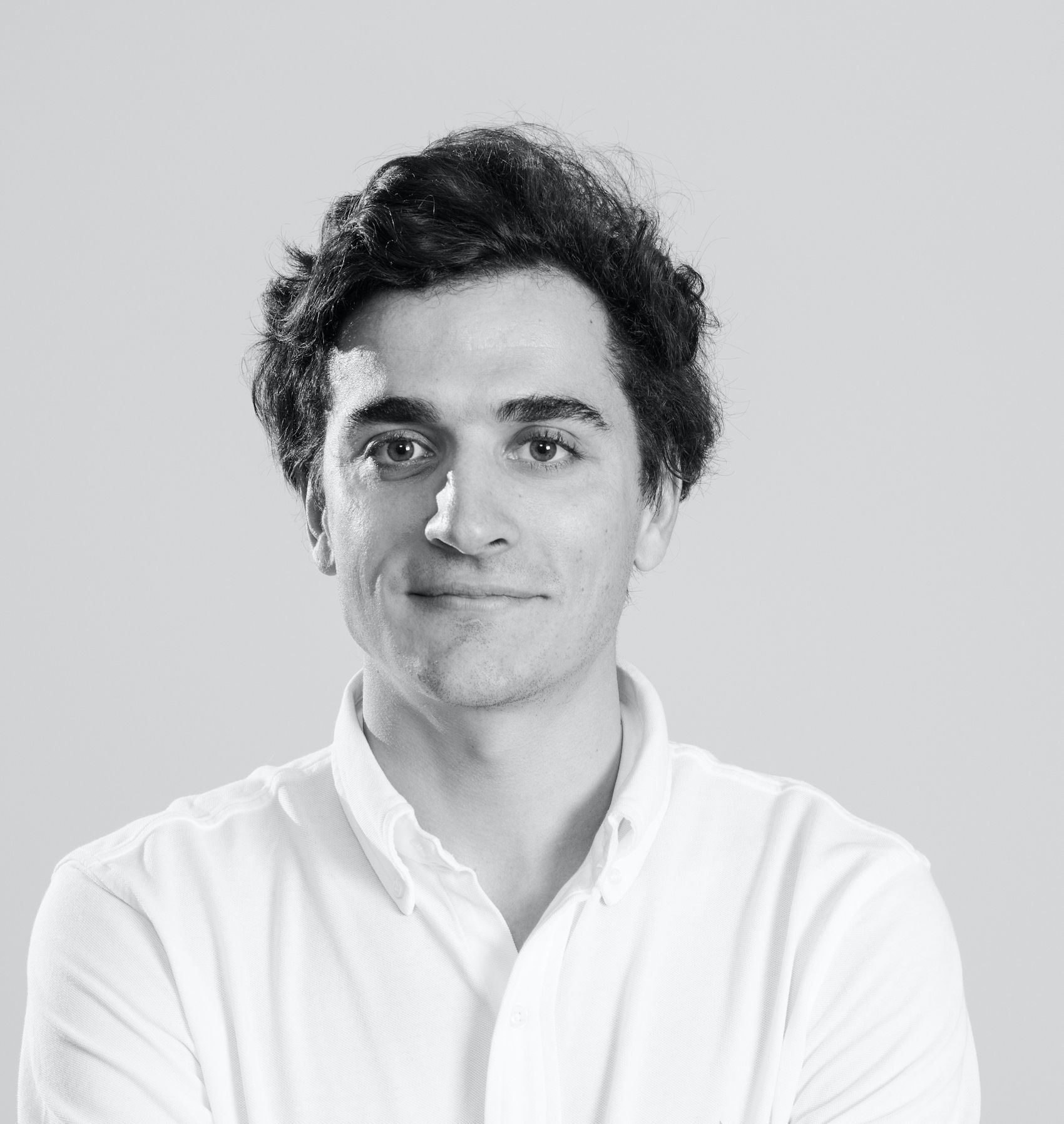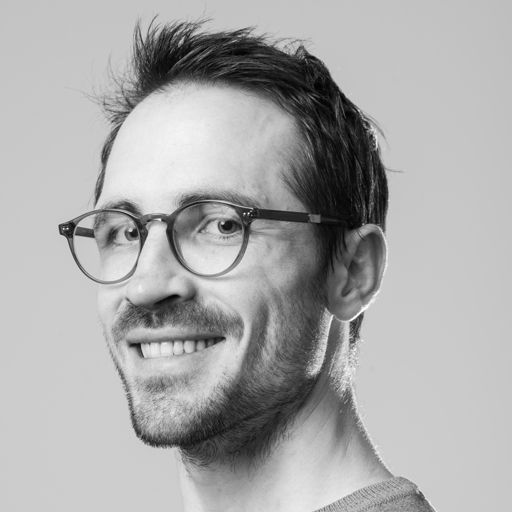Eléonore, UX Director in PayFit's Design Studio, was recently interviewed by Tandemz CPO France Wang, for their UX-centered blog. We thought this was a great interview, and the Tandemz team kindly agreed to see the article translated for the Backstage blog. A huge thank you to them!
This month, we had the pleasure of talking with Eléonore de Lusignan, UX Director at PayFit. What emerged was a description of an organization where everyone is autonomous in their research, where knowledge sharing is standard, where qualitative and quantitative data come together, paying particular attention to data quality, without sacrificing the speed of delivery.
To begin, tell us a little about your background, and how you came to be the UX director at PayFit.
Honestly, I don't think I would have imagined, when I studied, that I would end up designing interfaces!
I went to a school of applied arts because I was very attracted to everything creative.For the record, I went to Rhodes Island School of Design, which is the school where the two founders of AirBNB graduated, in the class just before me.
There were a lot of options for me to choose from, and I really didn't know what to do. In the end, I decided to do the industrial design program, because it was known at RISD at the time as the path of choice for those who didn't really know what they wanted to do with their lives!
The industrial design program was very object-oriented, and what interested me most was understanding how people would use the objects we were going to design. However, there was no specialization at all, it was very exploratory. Everyone could do whatever they wanted and experiment with design thinking, at many different levels, without it being necessarily dedicated to one field or medium. And that's reflected in the diversity of the jobs that the members of my class are doing today, we're all doing very different things: it goes from consumer goods, to toys, to entrepreneurship, furniture, to interaction design and digital experiences.
And for you, what was your path from objects to digital?
When I left school, I had my first professional experiences in packaging. At the same time, I attended and worked on conferences, specifically, Lift Conference. I was able to meet entrepreneurs who were innovating a lot in the digital field: it was my digital revelation, and I wanted to develop my skills, in parallel to my work in packaging design.
In Paris I discovered the UX Paris community, which was founded by people who really inspired me: Sylvie Daumal, Claudio Vandi and Grandon Donovin. We had a book club, events, hackathons... And that's how I learned: by discovering books, by meeting people who were doing just what I wanted to do. That's what allowed me to identify the UX design industry.
At that point, it became pretty clear that I really wanted to get out of the packaging world and try my luck as a UX designer. So I quit my job and went freelance, then I found a job as a digital project manager in the luxury industry - indeed at that time there were few pure UX Designer jobs, there were mostly digital project managers with a UX design component.
There I discovered how things work in a digital project: how to work with developers, how to do quality tests, how to design interfaces, how to imagine a service... In short, how the design process and the development of a digital experience works from start to finish.
This experience also confirmed that I really wanted to be a UX designer and not a project manager. After two years, I was contacted by Avanade to be a UX consultant for them. It was my first pure UX design job. I learned a lot in the field, by doing, by experimenting with methodologies - for me, who is not at all an academic, it is very important to learn by doing! And what was great was that as soon as I managed to sell “user-centered design thinking” and convince my clients to apply my methodology, I had “carte blanche”. It was really fun but challenging, so I really needed to work hard on my methodology. And for the first time, I was able to apply user research, where before I wasn't doing enough or none at all!
Moreover, the user research aspect was particularly important: I often had to adapt products and SAAS solutions for clients, and for that I had to understand the users' behaviors, their needs, their workflows, and translate all that into their SAAS tools. There were a lot of technical limitations, so this phase of scoping and identifying needs was essential! It was often a big international challenge, because on the same digital transformation project, we needed to make sure our solutions met and worked for different markets.
I left after three years to join Sylvie Daumal at We Digital Garden. She is a person I admire a lot, and when the opportunity to work with her came up, I jumped on it! Working with her really allowed me to progress on all fronts as a UX designer, and on very free and varied projects where I often had to define everything from scratch. It's also where I discovered Product Design as it's known today, i.e. the fact of thinking about a service from end to end in a specific digital channel. For example, I worked for more than a year for Sodexo, to completely redesign the employee benefits experience. We had to design and develop 3 web applications and a mobile application for 3 different user profiles - employees, merchants and corporate. A real B2B2C challenge! My only frustration was that I was too far from the users. It was very hard to get data, to get the right to contact them - it depended largely on the maturity of the client, and it was hard to unlock as a consultant. User research took a lot of time, you had to fight a lot.
So for me the next logical step was to join a company, to get closer to the users.
At the same time, Léa (PayFit's VP of design), whom I met while working together for the Hexagon UX community, was setting up PayFit's design studio. Our exchanges allowed us to see that my experience was a perfect match for what she was looking for. That's how I joined PayFit as UX Director, to lead the Design Studio!
Tell us a little bit about the PayFit Design Studio: how does it collaborate with the rest of the company?
What you need to understand is that the PayFit product team is divided into different Tribes and Squads, including about 15 designers who work in triforce with PMs and Engineers on a specific product experience etc.
The Design Studio, on the other hand, is an independent and transversal team that is responsible for all the design needs of the product team. This includes three main needs:
First of all, we are responsible for the Design System. We maintain it, we enrich it so that it always brings more value to the users, we make sure that it is scalable for all the product teams, and we also guarantee the UX and graphic coherence of the interface. To do this, we are constantly on the lookout for product teams work, and as soon as we see that something is missing or that there is friction in the use of the Design System, we prioritize new features and components. We have a full-time team on it, with three developers and a designer.
We also guarantee the quality of the user experience, especially in terms of product localization. Indeed, in each country where PayFit operates, there is a team of engineers who have become experts in payroll calculation and who must adapt the product to local legislation and habits. Our customer’s payroll administration is not done in the same way from one country to another, and in order to adapt the workflows and make them evolve according to the changes in legislation, we created our own code language, JetLang, specialized for payroll, which allows us to adjust the interface as if it were a Wordpress site. Since these localization teams don't have a designer and are therefore less autonomous on the design side than the rest of the product teams, it's very important that we support to help them, especially on the user experience side.
The third point is user research, where we set up processes and practices to ensure that all user knowledge is shared with all the teams - whether it's qualitative or quantitative data.
You mention in your second point that you shoulder the localization teams to ensure that the user experience is good everywhere. How is that collaboration going?
This is something that has been a big challenge, especially with COVID.
I believe that user research should be the starting point of any design project: if I wanted engineers to understand their clients' needs, they had to do user research first.
For me, the best way to do this was to train them to do research themselves, because I believe very strongly in learning by doing. We started with a two-day training with some engineers who were most interested in developing their skills. Some had an easier time than others, implementing these practices : the UK team, for example, was very sensitive to the approach and put a lot of things in place, with the help of the Design Studio. Thanks to this, the product was able to evolve and progress in the right direction, and the results they obtained created awareness among the other teams, who began to replicate the approach.
As a result, the Design Studio became more and more involved in the different teams, which allowed us to iterate on how we interacted with the countries. It started with training, then it moved to coaching, then to occasional design reviews etc. Since then, we've set up different things, like dividing the different countries between the four designers in the Design Studio, so that they have a privileged contact who can give them feedback on their research methodologies or on the UX, and to do design reviews with them at least every three weeks.
In the end, I feel like it all comes down to user research! With the idea of teaching local teams to do research locally. But otherwise, how is it going in general at PayFit? You mention it as one of the cross-functional needs of the company.
Yes, because we saw that user research was really the lever that was missing in the countries! In fact, we filled a UX researcher position for France, which was taken by Mathilde Gauthier. And together we set up many processes!
At the global level of the company, for example, it is no longer a secret that we need to do user research, and everyone knows that before any initiative, we need to talk to customers. We also push them upstream to analyze existing data.
There is a big data culture at PayFit, so we always have plenty of information. There is of course the app and feature usage data, but also all the data collected by the support and sales teams, which is centralized, categorized and accessible to everyone. It's a very important source of qualitative and quantitative information, and as soon as there is a new project, we will advise you to study this data first.
This allows us to measure the impact of the topics in relation to our business priorities - our two main metrics being revenue and growth margin - but also to be as relevant as possible when it comes to interviewing customers, and thus save everyone time. For example, if the idea is to organize user interviews, we will advise the teams to analyze the data well beforehand in order to be hyper-precise about their objectives and their research hypotheses - and thus have a very targeted field guide. This also allows us to identify the clients who would be the most relevant to contact.
User Research seems very well integrated at PayFit, with product data analytics and your localization strategy. What is PayFit's vision for the future of User Research? What's the next step? What would you like to push further?
As much as we have plenty of ways to automate the data part, our vision for qualitative research is to find all the means to automate it and save time.
To go in this direction, the first priority was the way in which we processed information collected during user research. We implemented Dovetail - a tool in which we can transcribe interviews with a user, tag and categorize what was said, and quickly identify recurring insights. We took a chance with my colleague Mathilde, PayFit’s first user research: as we have a lot of people who do their own research, we weren't sure that the tool would really save them time. As researchers, we could see the value, but we wanted to let them test the tool directly. And the bet paid off: Thanks to Dovetail, analyzing notes and extracting learnings is so much faster! In addition, it allows us to create a qualitative knowledge base about customer feedback, which completes the knowledge base that we have at the data level that I already mentioned.
It's very powerful: everyone has access to Dovetail, and can capitalize on what others have learned. For example, I'm currently doing user research on a particular workflow. I haven't done any interviews yet. I just saw that one of my colleagues had done research on something else, and my keyword came up by customers 86 times. I already have 86 quotes that I need to process! It's absolutely fantastic.
Now the customer data is a bit scattered between different company tools, so we'll have to find a way to centralize all of it better, even if I don't think we're there yet. But already, I would like to have all the qualitative customer intelligence in one place. And then there are lots of automation and integration options with Dovetail that we still need to try & take advantage of.
I’ve talked a lot about Dovetail, but that is not our only approach. The main thing is the process and the methodology, in order to save more time and have better quality data. In order to conduct relevant user research, you need preparation, and our challenge is: how can we make this preparation time as fluid as possible? It has to be direct and easy, so that people can focus on what they are missing, what they want to dive deeper. Research is really a combination of practices & methods so that when we go to talk to users, we are sure not to waste our time.
That's why data must be shared, so that everyone can organically feed off the collective intelligence. Another major issue is how to classify information.
This is a real challenge, because, unlike an acquisition website or an e-commerce site which will have simple tracking plans to implement on Google analytics, on a SAAS product it is quite complicated. Today, we are in the middle of an investigation with several engineers: what is the best way to track our product? And to have more visibility on what our customers are doing? Having very accurate data of what our users are doing at any given time is also what helps us stay rational and eliminate certain biases. You can’t assume that when you go talk to a user, they know the product by heart, or they have already tried everything once!
Everything is complementary, and there is never only one way to do research. There are always alternatives, and you have to diversify your research methods and sources. It is the combination of things that makes the richness of what you learn.
And so, looking back, what would be your advice for someone starting out in UX?
I would really emphasize learning by doing, trying & testing things as soon as possible. 70% of the way we learn is on the job. You really have to dare to take a chance & experiment right away.
And also, above all, surround yourself with people who inspire you, and follow closely the people who are at the top of the discipline. When I started as a UX designer, I participated in as many events as possible, through reading books, activities, networking... Today I see Mathilde doing the same to grow as a user researcher, and it's essential for her to make progress because she’s the first in this position today at PayFit! And I can clearly see the results, thanks to everything she has brought to the company through being involved in the France tech research community.
By the way, we are hiring our first UX researcher for our German product team. Apply now!
Thank to France Wang and the Tandemz team for allowing us to translate this piece and to publish it on Backstage!
Header photo by Michal Czyz on Unsplash.


